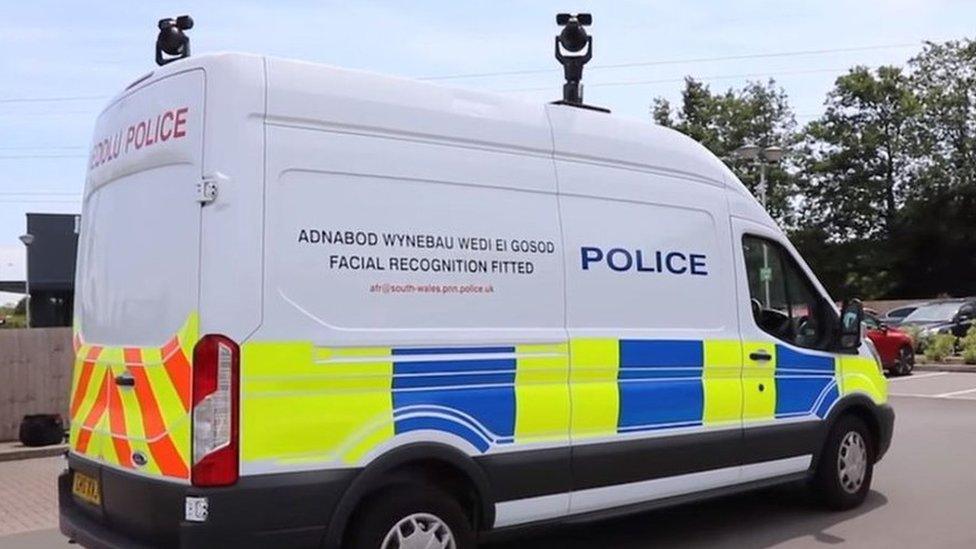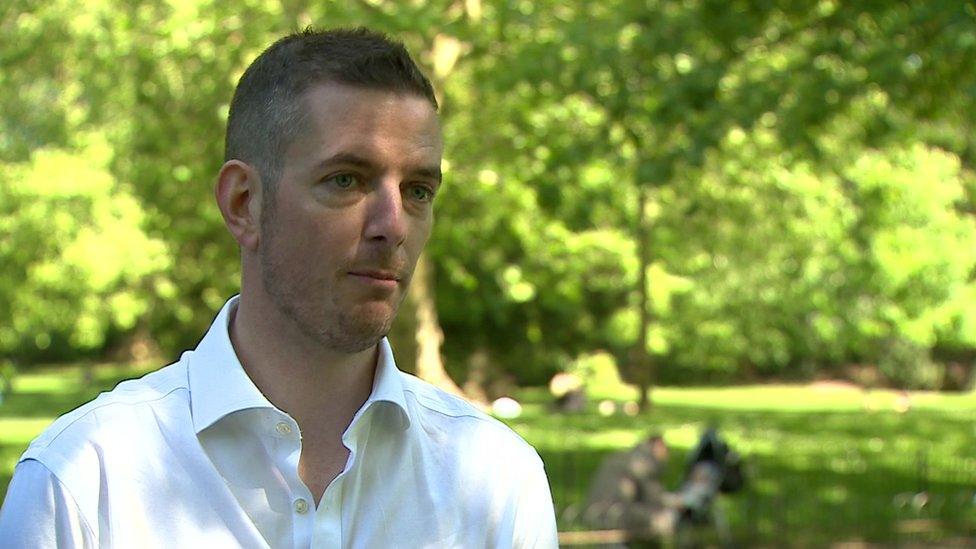South Wales Police: Facial recognition images 'deleted instantly'
- Published

South Wales Police is one of three UK police forces to use automatic facial recognition (AFR) technology
Images of people not on a "watch list" are deleted from facial recognition technology in "milliseconds", a judicial review has heard.
Ed Bridges has launched the first major legal challenge over police use of surveillance equipment after his picture was taken while shopping.
He claims weak regulation means the technology breaches human rights.
The hearing in Cardiff was told South Wales Police uses the equipment within the correct legal framework.
Automatic facial recognition (AFR) technology maps faces in a crowd by measuring the distance between facial features then compares results with images on a force database - the "watch list" - which can include suspects, missing people and persons of interest.
'Fair balance'
Mr Bridges previously said he noticed a police van while he was out Christmas shopping in Cardiff.
On the second day of the case, the police force's barrister Jeremy Johnson QC explained that the technology compares the faces it views with those on "watch lists".
If no match is made, the data is deleted in "milliseconds" and no face could be extracted from the data, he said.

Ed Bridges has mounted a legal challenge over the use of the technology
Mr Johnson told the court that fingerprint analysis was one of few tools available to help officers when the force was founded 50 years ago.
Since then, he said there had been concerns surrounding civil liberties with tools such as automatic number plate recognition and mobile phone data analysis.
But with the correct regulations, he argued, all were valuable tools for the police.
"Fair balance has to be struck between civil liberties and the detection and prevention of crime."
Mr Johnson said an operator would only view an image if a match was made with someone on the watch list. An officer on the ground would then approach that person.
He said AFR was able to "identify persons of interest they would otherwise not be able to do and that some of the results had been impressive".
The force argued it has long been a common law power to obtain facial images from CCTV and photographs, with "no difference in principle" in using AFR.
The case continues.
- Published21 May 2019

- Published12 July 2018
